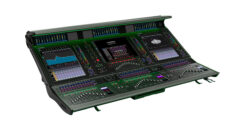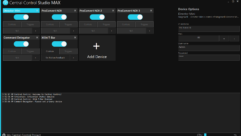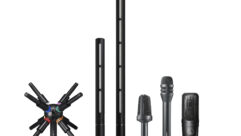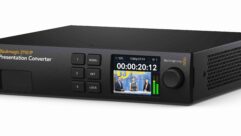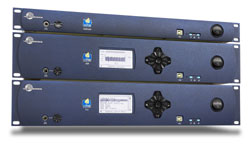

Lectrosonics’ ASPEN Boasts TCP/IP Audio Control
Lectrosonics, a manufacturer of wireless microphone systems and audio processing products, introduced its ASPEN (Audio Signal Processing Expansion Network) product line at the InfoComm 09 show in Orlando. ASPEN uses proprietary algorithms developed by Lectrosonics and high-speed DSP hardware.
Lectrosonics, a manufacturer of wireless microphone systems and audio processing products, will introduce its ASPEN (Audio Signal Processing Expansion Network) product line at the InfoComm show in Orlando. ASPEN uses proprietary algorithms developed by Lectrosonics and high-speed DSP hardware, according to the company. The series includes TCP/IP control over Ethernet, unlimited input expandability, a real-time clock, 48-channel matrix bus, 1 Gbps expansion port, and true 48-volt phantom powering for all inputs.
Products in the new ASPEN Series are RoHS-compliant (Restriction of Hazardous Substances). The family of products will include the SPN812, SPN1612, SPN1624, and SPN2412 matrix processors, the SPNConference unit for teleconferencing, the SPNTrio all-in-one teleconferencing processor with power amp, the SPN16i and SPN32i input-only modules, and the SPNPower12 multi-channel power amplifier. They all have the ASPEN port with 1 Gbps throughput for sending audio and control data over a single Cat-6 line.
The technology’s secret sauce is Lectrosonics’ proprietary Proportional Gain Algorithm (PGA) for auto-mixing without the use of noise gates, resulting in transparent audio and increased gain before feedback, according to the company. Five mixing modes are individually selectable for every matrix cross point. Centralized echo cancellation enables bridging for telepresence applications with simultaneous telco and videoconferencing.
“With the ability to be customized to their environment, these systems are ideal in presentation spaces, meeting facilities, boardrooms, houses of worship, and similar venues where the ability to automate and control a variety of input/output sources without supervision of an AV technician is highly desirable,” said Karl Winkler, Lectrosonics’ director of business development, in a statement.
Every input in the ASPEN system supports mic- or line-level signals and includes a one-third-octave noise reduction filter, an eight-notch feedback suppressor, delay, a four-band fourth-order filter set, a dynamic compressor, and two level meters. The 48-volt phantom power is available on all inputs. Every output includes an eight-stage, fourth-order filter set, delay, dynamic compressor, limiter, and level meter. All inputs and outputs are fully differential.
Programming and access to ASPEN devices is accomplished via Ethernet, USB, or RS-232. The system also allows for simultaneous multipoint third-party (Crestron and AMX) and native control.



